Find out if tamari is gluten-free, what it’s made from, and what the differences are between tamari and soy sauce. Also learn about some tamari substitutes.
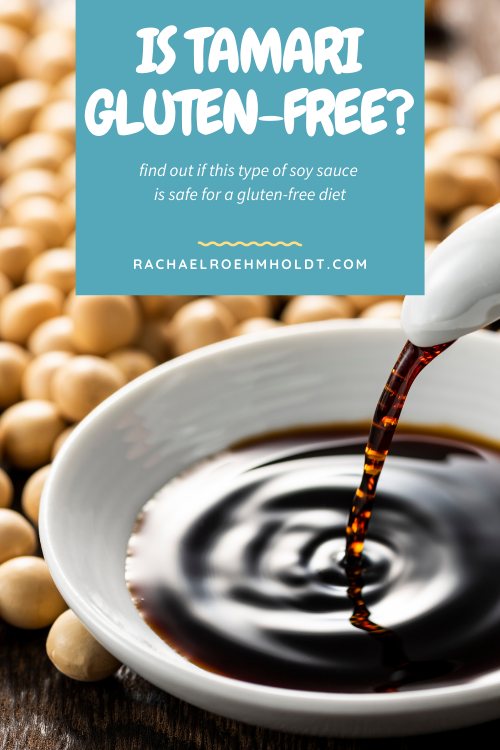
Note: I am a proud Amazon, Chomps, MunkPack, and Thrive Market affiliate and am happy to recommend their service and products to you. Please know that as an affiliate, I may receive a small commission on the products you purchase after clicking through my links. For more info, please see my disclosure policy here.
If you enjoy making stir-fries or other Asian dishes at home, you probably know that soy sauce is called for in a lot (I mean a lot) of recipes. This ingredient is pervasive across all types of Asian cuisine, and for good reason.
Soy sauce is salty, deep in umami flavor, and lends itself to creating some amazing sauces to make dishes taste amazing.
If you have been following a gluten-free diet or are just getting started with one, you may have heard about tamari.
Tamari is a type of soy sauce that we’re going to dive deeper into talking about in this post so we can understand if this is a good ingredient to incorporate into your regular gluten-free diet.
Learn what tamari is, what soy sauce is, the difference between the two, some tamari brands to look for at the store, and some tamari substitutions.
What is tamari?
Tamari is a Japanese soy sauce that is similar to traditional Chinese soy sauce, but is made without any wheat products. Tamari soy sauce is made with fermented soybeans
This soy sauce has a strong umami flavor, like most soy sauces, but is darker in color and is less salty than i
Read on: 10 ways to use gluten-free tamari soy sauce
Read on: Is sushi gluten-free?
What is soy sauce?
Soy sauce is a sauce made with fermented soybeans that’s used in many Asian dishes. This sauce is used as a condiment but also as a main ingredient in many different types of sauces you’ll find at Chinese, Japanese, or other Asian cuisine restaurants.
Soy sauce has a strong salty and rich umami flavor. It can be used as a dipping sauce for dishes like egg rolls, or added to stir-fries to add some flavor and a salty bite.
You can usually find soy sauce in normal and low sodium options. Both of these varieties offer plenty of salt, so it’s usually better for your health and heart to opt for the low sodium choice when you have it.
Read on: Gluten-free Chinese food
Read on: 17 gluten-free condiments for your kitchen
Read on: How to stock your gluten and dairy-free pantry
Read on: Are egg rolls gluten-free?

What is gluten?
Gluten is a protein found in most wheat products, and acts as the “glue” that helps to hold wheat, barley, kamut, spelt, farro, durum, bulgur, rye, and semolina together to maintain their shape.
You can find gluten in whole grains, but also in many processed foods as well. If you purchase wheat bread, there will be gluten in it, because wheat by nature has gluten.
Many processed foods have hidden gluten in them in the form of gluten or wheat derivatives. These are also in the form of flavorings, binders to keep ingredients together, or other additives.
Is soy gluten-free?
Since soy comes from a bean and not wheat or a relative of wheat, soy is gluten-free and safe for a gluten-free diet.
If you follow a gluten-free diet, you can enjoy soy and soy products as long as there are no other ingredients in the product that contain gluten.
Read on: Is soy gluten-free?
Is soy sauce gluten-free?
Though soy sauce is made with fermented soybeans, which are gluten-free, many soy sauces available today contain wheat in their ingredients.
Some soy sauces do not contain any wheat products and therefore no gluten, so if you follow a gluten-free diet, look for one of these gluten-free soy sauce options.
Read on: Is soy sauce gluten-free?
Read on: Ramen-style noodle soup
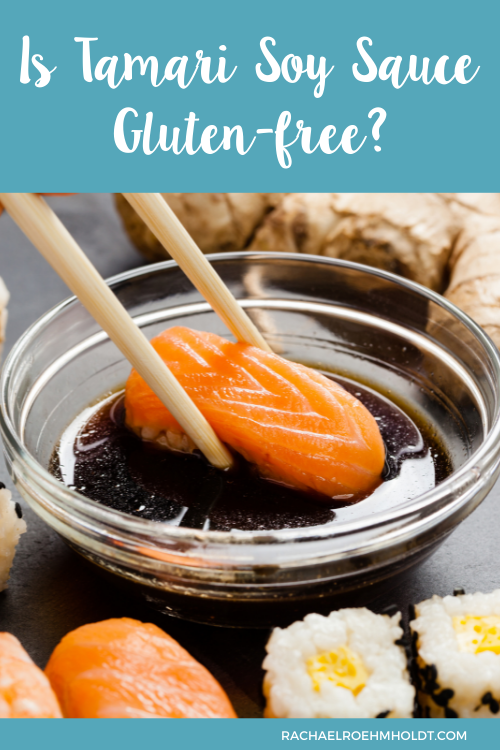
Is tamari gluten-free?
Tamari is a soy sauce that contains only fermented soybeans and no wheat or gluten. This type of soy sauce originates from Japan and is safe for a gluten-free diet.
Choose a brand of tamari over traditional soy sauce next time you want to use soy sauce in your cooking. Review ingredients lists and look for a gluten-free label to ensure what soy sauce you choose is in fact gluten-free.
Read on: 10 ways to use gluten-free tamari soy sauce
One of my little secrets is that I carry around a copy of my GFDF Take Along Cards so that I always have a point of reference when I can sneak a peek at the ingredient list of a food.
>> Get your copy of the GFDF Take-Along Cards to make this easy on you.
Gluten-free soy sauce
Tamari soy sauce is a gluten-free soy sauce option for anyone on a gluten-free diet. It is soy sauce, but made without wheat like you’d find in a traditional Chinese soy sauce.
Let’s talk more about the difference between tamari and soy sauce, some brands of tamari you can look for at the grocery store, and where to buy this ingredient.
We’ll also talk about what to use if you aren’t able to find tamari at your store and what some substitutes are for this ingredient.
Tamari vs soy sauce
There are a few differences between tamari and soy sauce that are helpful to know if you’re avoiding gluten.
First, where they come from. Soy sauce is made in various forms throughout Asia, but the one that we know most commonly in the US is Chinese soy sauce. This is what most restaurants and big box grocery stores sell.
Tamari is a type of soy sauce that is made in Japan. This product is made similarly to other soy sauces you’d find in China or the rest of Asia, but does not contain wheat. Both are made with fermented soybeans, but other soy sauces use wheat, whereas Japanese tamari soy sauce does not.
Gluten-free tamari soy sauce is darker in color and has a more rich and deep flavor than Chinese soy sauce or other Asian soy sauces.
If you follow a gluten-free diet, know that you don’t have to miss out on using soy sauce in your dishes. You’ll just want to make the switch to tamari instead of the Chinese soy sauce you’re probably more familiar with.
Read on: Chicken Lettuce Wraps
Read on: Gluten-free Teriyaki Sauce
Read on: Dairy-free Green Bean Casserole
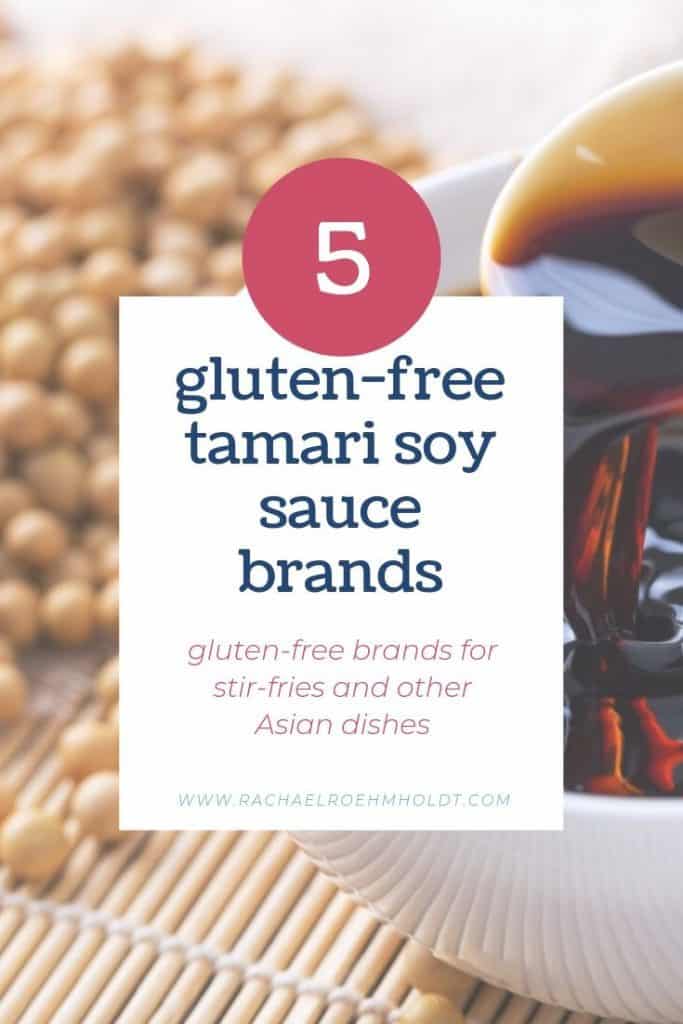
Brands of gluten-free tamari soy sauce
There are a number of tamari soy sauce brands on the market. Here are five options that I’ve been able to find at my grocery store or online with success.
- San-J Organic Tamari
- Kikkoman Tamari Soy Sauce
- Eden Foods Organic Tamari
- Ohsawa Tamari Soy Sauce
- Kevala Organic Tamari Sauce
Read more about each of these brands of gluten-free soy sauce.
Where to buy tamari
You can find gluten-free tamari soy sauce at most local grocery stores on the health food aisle or international foods aisle.
My local grocery store sells it near the health foods and I’ve also found it at Sprouts. In the past when it’s been unavailable locally, I’ve found it on Amazon and Thrive Market too.
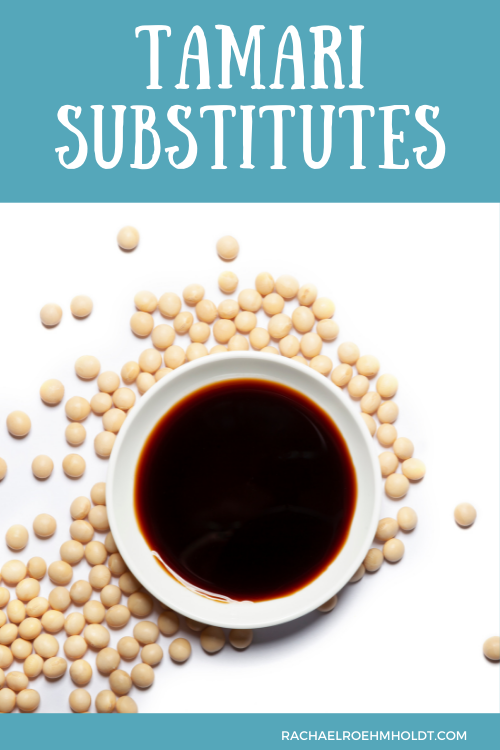
Substitutes for tamari
If you’d like to use tamari for your gluten-free diet as opposed to a Chinese soy sauce that contains gluten, but you can’t get any where you live or want another option, let’s talk about tamari substitutes.
Coconut aminos
Coconut aminos have a similar umami flavor to soy sauce and tamari, but it does not contain any soy. You can substitute coconut aminos for tamari using a ratio of one-to-one. This option is a little less salty than tamari, so keep that in mind as you make this substitution.
Liquid aminos
Liquid aminos are similar to coconut aminos, but this option contains soy. It’s gluten-free just like tamari and has an umami flavor and is salty like what you’d expect from a soy sauce. You can use this as a one-to-one substitute in your recipes that call for tamari.
If you’re interested in some other common Japanese ingredients and how they fit into a gluten-free diet, you might want to check out some of these posts.
- Is eel sauce gluten-free?
- Is mirin gluten-free?
- Is imitation crab gluten-free?
- Is teriyaki sauce gluten-free?
- Is tempura gluten-free?
- Is rice gluten-free?
- Is wasabi gluten-free?
If you love using soy sauce in your Asian dishes, I hope this post has helped you get a sense for which soy sauce to choose to help you stick with your gluten-free diet.
If you loved this post, I hope that you’ll share it with your friends on Facebook and pin it for future reference on Pinterest.
Love this post? You might also want to check out these!
Find out if your favorite foods and ingredients contain gluten with these posts!
Which whole grains are gluten-free?
Find out which whole grains are gluten-free and safe to eat on a gluten-free diet. Learn the 12 whole grains to stock your gluten-free pantry with in this article.
Is Jello gluten-free?
Jello is the wiggly, jiggly, transparent treat that most of us enjoyed as kids. If you eat a gluten-free diet, you might be wondering if it’s gluten-free. Find out the details and the answer to that question in this post.
Are marshmallows gluten-free?
If you’re on a gluten-free diet, you may be wondering: are marshmallows gluten-free? Find out if there is gluten in marshmallows and 5 brands of marshmallows are that are gluten-free in this post.
Are Rice Krispies gluten-free?
Are you a fan of Rice Krispies? If so, you may have wondered if rice krispies are gluten-free, especially if you follow a gluten-free diet. Find out the details and the answer to that question in this post.
Is soy sauce gluten-free?
Is soy sauce gluten-free? Find out in this article where I share what your options for soy sauce are on a gluten-free diet.
Is Quinoa Gluten-free?
Is quinoa gluten-free? If you follow a gluten-free diet, you may have been wondering if this food is safe for you to eat. In this post, you’ll learn what quinoa is, how to enjoy it, and if it’s good for a gluten-free diet.
Is Rice Gluten-free?
If you’re following a gluten-free diet, you may be wondering if rice is gluten-free and safe to eat. In this post, we’ll discuss the different types of rice and whether or not you should add them to your regular rotation on a gluten-free diet.
Is Cornstarch Gluten-free?
Find out if cornstarch is safe for a gluten-free diet, the health benefits, and discover some gluten-free cornstarch brands.
Is Honey Gluten-free?
Find out if honey is safe for a gluten-free diet, the health benefits, and discover some gluten-free honey brands.
Are Oreos gluten-free? Are Oreos dairy-free?
If you love Oreos and avoid gluten or dairy for health reasons, you may be wondering if these favorite cookies are gluten-free or dairy-free. In this post, we’ll go through everything you need to know about Oreos and if you’ll want to include them in your diet if you have allergies or food intolerances.
Is corn gluten-free?
Is corn gluten-free? Find out if corn contains gluten, if different types of corn contain gluten, and if this ingredient is safe for a gluten-free diet.
Is oatmeal gluten-free?
If you love oats and oatmeal for breakfast or adding oats to your baked goods, you might be wondering if these are safe for a gluten-free diet. Find out in this post!
Are Doritos gluten-free?
Do you follow a gluten-free diet and wonder if Doritos are gluten-free? This post will give you all the information you need to know to make an informed decision on whether to enjoy these or not if you’re gluten free.
Is coffee gluten-free?
Do you love coffee and just getting started with a gluten-free diet? This post will give you all the information you need to know about gluten and coffee.
Is Ice Cream Gluten-free?
Are you an ice cream lover? Find out if ice cream is gluten-free, which brands are safe for a gluten-free diet, and how to order ice cream out.
Is Cheese Gluten-free?
If you love cheese and follow a gluten-free diet, you may be wondering which types of cheese are safe for you. Find out in this post if cheese is gluten-free and what to look out for.
Is Cream Cheese Gluten-free?
Wondering if cream cheese is safe for your gluten-free diet? Discover what cream cheese is made of, what brands are gluten-free, and things to be aware of when eating cream cheese on a gluten-free diet.


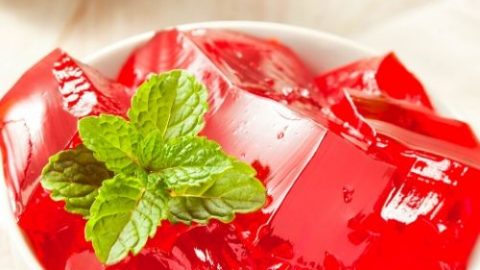



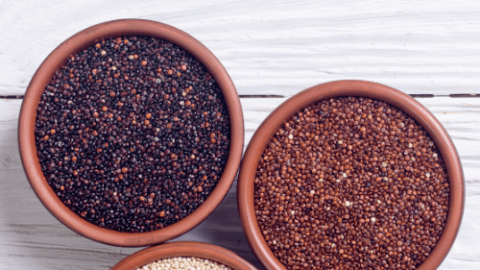











Leave a Reply